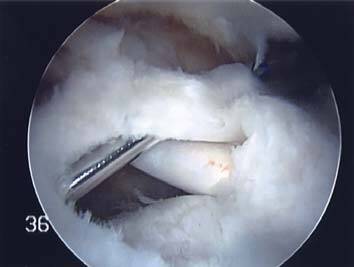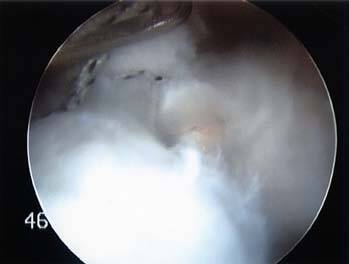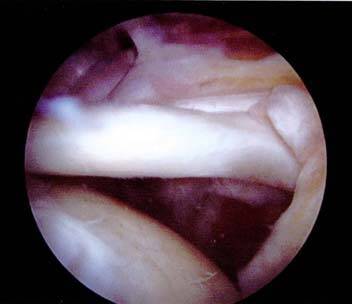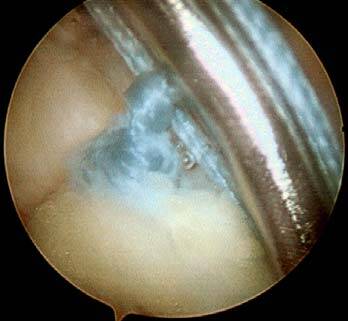
Rotator Cuff Tear
Rotator Cuff Tears are a common source of shoulder pain, weakness and dysfunction. Many Rotator Cuff Tears occur due trauma, such as falls, motor vehicle accidents, etc. These traumatic tears are usually best treated by early surgery. If the Rotator Cuff Tear is not repaired, then over time, the Rotator Cuff tendon can weaken and the Rotator Cuff muscle can atrophy (turn to fat). Traumatic Rotator Cuff Tears do better if surgically repaired within 6 months.
However, over 50% of rotator cuff tears occur without trauma, due to overuse or simply as part of the aging process. As we age, we lose our hair, our bone density, and often a certain part of our Rotator Cuff. 27% (over 1 in 4) of people 60 years or older with no shoulder pain at all have a full-thickness Rotator Cuff Tear. And it doesn’t bother them. In patients over the age of 60 years who haven’t had significant trauma and who can elevate their arms above their heads, 50-82% (an average of 2/3) with Rotator Cuff Tears can obtain pain relief by simply strengthening their Rotator Cuff and shoulder blade muscles with a specific strengthening program. This means that not all Rotator Cuff Tears need to be surgically repaired. However, in patients under 60 years of age or those who have had a trauma, the Rotator Cuff Tear is probably not part of the aging process, and should be repaired. In addition, those with significant shoulder weakness or who are unable to elevate their arm should have their Rotator Cuff Tear surgically repaired.
The specific Rotator Cuff and shoulder blade muscle strengthening exercises, and their proper form, need to be learned from a knowledgeable therapist. An elastic resistance (Isotube), not a dumbbell weight, works best. Once you know what to do and have the Isotube, these exercises can be performed at home. Please see the Therapy Protocols section for more details regarding these specific exercises. Exercises should be performed every day. I recommend starting with one set of 10-15 repetitions per exercise once a day. However, some people do better performing two sets a day (one in the morning, one at night). In the presence of a full-thickness Rotator Cuff Tear, if 6-12 weeks of Rotator Cuff and shoulder blade muscle strengthening plus a steroid injection don’t decrease the shoulder pain down to an acceptable level then Arthroscopic Rotator Cuff Repair should be strongly considered. Rotator Cuff Tears that cause pain and are not repaired can enlarge, scar down, become stiff and undergo atrophy (turn to fat). A Rotator Cuff Repair performed later will stop the progression of the atrophy, but will not correct any atrophy that has already occurred.
Arthroscopic Rotator Cuff Repair
Almost all Rotator Cuff Tears can be repaired arthroscopically. Arthroscopic surgery is minimally invasive outpatient surgery that uses small stab wounds, fiber optic scopes and small instruments. Compared to open surgery, Arthroscopic Rotator Cuff Repair is less painful, and leads to less stiffness and greater patient satisfaction.
To minimize pain, stiffness, and other complications a Subacromial Decompression (Acromioplasty) is not performed in the vast majority of cases. Subacromial Decompression or Acromioplasty means removing a bony “hook” or “spur”, which used to be erroneously believed to cause the Rotator Cuff Tear. However, removing this bone may increase postoperative pain and stiffness, and can occasionally result in the complete loss of shoulder elevation. I have published a recent study showing that performing a subacromial decompression unfavorably alters the biomechanics of the shoulder, which is not good.1 Please see the Rotator Cuff Tendinosis section for more details.
If desired, a nerve block can be performed by the anesthesiologist. This involves a needle stick into the area above the shoulder to block all of the nerves going into the arm so that nothing is felt for 12-24 hours. This is optional, and some do it and some do not. If you don’t have a high pain tolerance you might want to consider getting the block. For those who don’t get the nerve block, I can inject morphine into the shoulder joint, which can “take the edge off” of the pain for 8 to 12 hours.
References
1: WR Su, Budoff JE, Luo ZP: The Effect of Coraco-Acromial Ligament Excision and Acromioplasty on Superior and Anterosuperior Glenohumeral Stability. The Journal of Arthroscopy 25: 13-18, 2009
After Shoulder Arthroscopy, keep the arthroscopy portals (stab wounds) clean and dry for 24 hours. Before 24 hours, bathing is fine; just keep the shoulder above water and don’t get the dressings wet. After 24 hours, the wounds can get wet in the shower, then blot them dry. Don’t submerge the wounds under water until the stitches are removed, which usually occurs at the first post-operative visit at 2 weeks. The elbow, wrist, forearm and hand can be moved early on to prevent stiffness. During Shoulder Arthroscopy, fluid is placed into the shoulder. This fluid will leak out over the first 2-3 days, and is not blood.
Following surgery, Rotator Cuff Repairs need to be protected for at least 12 weeks. Because the Rotator Cuff is very slowly healing tissue, the post-operative course following a Rotator Cuff Repair is highly inconvenient. An abduction pillow, a sling with a pillow on it that is nearly-universally hated, is worn for 6 weeks, except when showering. It is slept in. Nobody likes it, but it does prevent Rotator Cuff re-injury and increases the Rotator Cuff’s blood supply to help it heal better. No active shoulder elevation (i.e. using the operated shoulder to lift its arm) is allowed for 6 weeks. Normally, a home motion program is begun after the first follow-up appointment at 2 weeks. Therapy is used as needed; it’s better if motion can be initially regained without the help of a therapist. Physical therapy is used when a patient has trouble regaining motion on their own following surgery. Some people need a lot of therapy, some hardly any. No lifting anything heavier than a telephone for 3 months. Please add a “2 week penalty” to all of those time-periods for very large rotator cuff tears, very old rotator cuff tears and revision (redo) rotator cuff repairs.
Most people can return to heavy work or sports at 6-12 months, depending on the size of the tear and the stressfulness of the activity. It takes about 1-1.5 years before the shoulder feels “as good as it’s going to get”. However, when all is said and done, most patients who obey the restrictions and perform their home exercises are much improved and extremely happy with the improvements in their pain relief, strength and shoulder function following an Arthroscopic Rotator Cuff Repair.
Most people usually do very well following Arthroscopic Rotator Cuff Repair. Those who wait too long may develop atrophy of the Rotator Cuff’s muscles, leading to worse results. However, even in these cases it’s usually worth performing the Rotator Cuff Repair to decrease pain and regain whatever shoulder function can possibly be regained.
A Rotator Cuff Tear – Cannulas (clear hollow tubes) facilitate the passage of arthroscopic instruments into the shoulder.
Instruments are used to pass sutures through the torn Rotator Cuff tendons to sew them up side-to-side. This is shown diagrammatically (above) and then photographically (below).
Sutures are used to repair the Rotator Cuff tear side-to-side.
A knot is tied with a special instrument to repair the Rotator Cuff tendon.
Suture anchors, small harpoon-like plastic devices with strong sutures running through them, are placed into bone to tie the torn Rotator Cuff tendon down to the bone from which it tore. This is shown in the diagram above and the photograph below. In the photograph, sutures can be seen coming out of the anchor, which has been embedded in the bone.
Special instruments are passed through the rotator cuff tendons to shuttle the anchor’s sutures back through the rotator cuff.
Once the anchor’s sutures have been passed through the rotator cuff, knots are tied arthroscopically to tie the rotator cuff tendons back bown to the bone.







